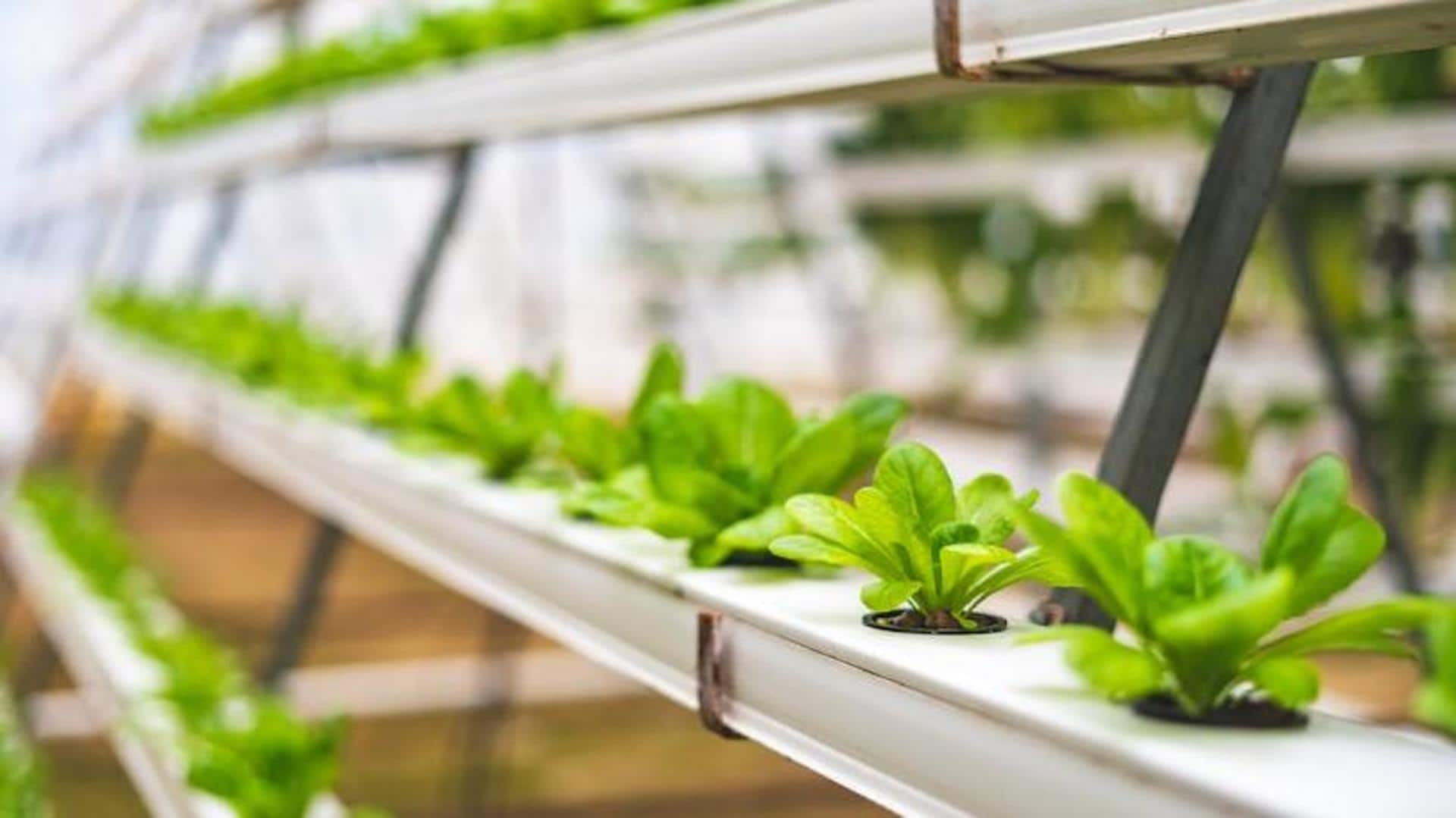
Alternate gardening: Methods of hydroponics you can try at home
What's the story
Have you ever wanted to grow your own produce at home but refrained from them due to lack of space? This can be your cue to start hydroponics. A soilless gardening technique, hydroponics is a method where plants are grown from nutrients like mineral-rich water solution, or cocopeat. Here are a few methods of hydroponics you can try at home.
Method 1
Drip system
This is one of the most commonly used methods of hydroponics. Under this system, a nutrient solution is continuously circulated from the reservoir to suspended plants in net pots under the direction of a timer, where it is absorbed by the plant roots at the growing medium. The extra solution then slowly trickles down to the reservoir from where it can be reused.
Method 2
Deep water culture (DWC)
A DWC comprises a reservoir that is filled with nutrient solution and water. With the use of a net pot and growing medium, the plants are hung over the reservoir. The reservoir gives the roots a steady supply of water and nutrients and helps them grow. Air pumps are used to deliver air and oxygen to the roots and thereby prevent them from suffocating.
Method 3
Kratky method
A reservoir of nutrient-rich water is used in this passive hydroponic technique to grow plants suspended above it. Since it is a non-circulating technique, no additional water, nutrients, oxygen, or electric pumps are required after the initial application. The Kratky method is the most basic hydroponic system with applications for both small-scale and low-maintenance home growers as well as commercial food production.
Method 4
Nutrient film technique
A sizable reservoir that contains an air pump and air stone to maintain oxygenation holds the water and nutrition solution. Water is pushed through the canal by a water pump that is timed, to where the roots are not completely immersed. The solution is returned to the system's main reservoir at the channel's terminus for reuse.
Method 5
Wick system
In the wick system, a wick, such as a rope or a piece of felt, is used to carry nutrients and water to the roots of the plants. The plants are suspended in a growing media, such as perlite or coconut coir. A water and nutrient solution reservoir is located beneath the tank. Here, the nutrient supply will be constant.
Bonus
Aeroponics
Although expensive, aeroponics is one of the most effective systems. Here, unlike hydroponics, the roots along with the plants are suspended in mid-air. Misters located in the reservoir's oxygenating air pump shower a fine mist over the plant roots. The roots may continuously get nutrients without becoming overly saturated or submerged. It exposes the roots to oxygen naturally, which is essential for plant growth.